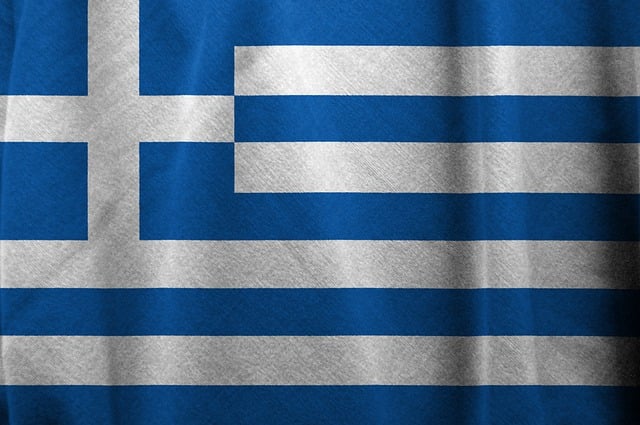The We the People American Flag is a powerful symbol of democracy, unity, and freedom. It represents the collective power of U.S. citizens, embodying core values like liberty, equality, and justice as outlined in the Constitution. The 50 stars and 13 stripes tell America's story, fostering a sense of belonging and pride among diverse communities. Legal protections ensure the flag remains a revered symbol in public spaces, inspiring conversations about shared freedoms and civic responsibility.
“The American Flag, with its ‘We the People’ ethos, stands as a powerful symbol of freedom and national identity. This article explores the historical significance of this iconic design, decoding its symbolic values and how it reflects the diverse fabric of America.
From its original intent to its modern role as a unifier, we delve into the flag’s ability to encapsulate and represent American diversity. We also examine legal protections ensuring its respect, and its cultural importance in celebrations across the nation.”
- The Historical Significance of We the People on American Flag
- Symbolism and Design Elements: Decoding National Values
- The Flag as a Unifier: Reflecting American Diversity
- Legal Status and Respect: Protecting National Symbols
- Celebrating Freedom: Cultural Significance and Public Displays
The Historical Significance of We the People on American Flag

“The phrase We the People etched across the American flag holds profound historical significance, encapsulating the core values that founded the nation. This iconic expression was borrowed from the opening of the United States Constitution, emphasizing the collective power and sovereignty of the citizens. It signifies that the government derives its authority from the people, a democratic principle that has been a cornerstone of American society since its inception.
The inclusion of We the People as a central design element on the flag serves as a constant reminder of the nation’s commitment to individual liberties, equality, and representative governance. It has become an enduring symbol, inspiring generations with its message of unity and freedom, and reminding Americans of their role as active participants in shaping their country’s future.”
Symbolism and Design Elements: Decoding National Values

The We the People American Flag is more than a simple piece of cloth; it’s a powerful symbol imbued with profound national values. Each star and stripe tells a story, representing the unity, courage, and diversity that define the United States. The design elements of this iconic flag are deliberate and meaningful, serving as a visual representation of the nation’s ideals.
Decoding these symbols requires understanding their historical context. The 50 stars represent the 50 states, fostering a sense of national unity while acknowledging the collective power of each individual state. Meanwhile, the 13 stripes alternate red and white, commemorating the original 13 colonies and symbolizing the struggle for independence and freedom that birthed the nation. This flag, with its simple yet profound design, continues to inspire and remind Americans of their shared values and the enduring spirit of liberty.
The Flag as a Unifier: Reflecting American Diversity

The We the People ideal, etched into the heart of the American identity, is beautifully represented by the American Flag. As a symbol, it transcends racial, ethnic, cultural, and socioeconomic boundaries, uniting diverse individuals under a common vision. Each stripe represents a state, embodying the unity of 50 unique yet interconnected parts, while the stars symbolize the collective strength and independence of each community within the nation.
The flag serves as a powerful reminder that despite their differences, Americans share core values: liberty, equality, and justice for all. It fosters a sense of belonging and encourages citizens to embrace their diverse backgrounds, recognizing that together they form the vibrant mosaic that is America.
Legal Status and Respect: Protecting National Symbols

The We the People ideal, enshrined in the U.S. Constitution, is embodied by the revered American Flag, a potent symbol of freedom and national identity. Its legal status as a national emblem is enshrined in law, reflecting the deep respect and protection it commands. This reverence extends beyond its physical representation; it encompasses the values it represents—liberty, justice, and equality.
Protecting these symbols is not merely about preserving fabric and paint; it’s about upholding the principles they stand for. Legal frameworks ensure that the American Flag remains a symbol of unity and pride, respected in public spaces, ceremonies, and everyday life. This protection fosters a sense of civic responsibility and encourages citizens to honor the legacy it represents, perpetuating the values that founded the nation.
Celebrating Freedom: Cultural Significance and Public Displays

The We the People ideal, captured so poignantly by the American Flag, has long been a symbol of freedom and national values. Public displays of this iconic flag serve as a powerful reminder of America’s commitment to liberty, unity, and democracy. In communities across the nation, the flag is flown with pride during celebrations, memorial events, and everyday life, fostering a sense of belonging and shared purpose. Cultural significance runs deep; it evokes emotions and ignites conversations about the freedoms we hold dear.
These displays transcend mere aesthetics; they become living testaments to our collective history and aspirations. Whether adorning public buildings, marching in parades, or gracing front porches, the American Flag unifies diverse communities under a shared symbol of hope, resilience, and opportunity. It encourages citizens to embrace their rights and responsibilities, embodying the spirit of “We the People” in everyday actions.
